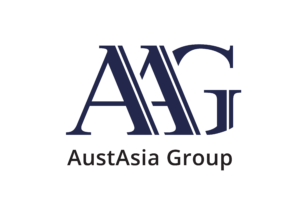Beneficiaries potentially impacted
The ATO’s updated guidance focuses primarily on distributions made to:
- adult children
- corporate beneficiaries, and
- entities with losses
but the direction is not confined to those particular situations.
Distributions to beneficiaries who are under a legal disability (e.g., children under 18) are excluded from these rules.
Actions
For those with discretionary trusts, it is essential to review all trust distribution arrangements in light of the ATO’s latest guidance to determine the level of risk associated with the arrangements. It is also vital to ensure that appropriate documentation is in place to demonstrate how funds relating to trust distributions are being used or applied to benefit beneficiaries.
Family trust beneficiaries at risk
The tax legislation contains an integrity rule, section 100A, which is aimed at situations where income of a trust is appointed in favour of a beneficiary but the economic benefit of the distribution is provided to another individual or entity. If trust distributions are caught by section 100A, then this generally results in the trustee being taxed at penalty rates rather than the beneficiary being taxed at their own marginal tax rates.
The latest guidance suggests that the ATO will be looking to apply section 100A to some arrangements that are commonly used for tax planning purposes by family groups. The result is a much smaller boundary on what is acceptable to the ATO which means that some family trusts are at risk of higher tax liabilities and penalties.
ATO is redrawing the boundaries of what is acceptable
Section 100A of 1979 has rarely been invoked by the ATO except where blatant and deliberate tax avoidance is at play. However, the ATO’s latest guidance suggests that the ATO is now willing to use section 100A to attack a broader range of scenarios.
Some important exceptions to section 100A include where income is appointed to minor beneficiaries or where the arrangement is part of an ordinary family or commercial dealing. The ATO’s recent guidance focuses on whether structures form part of an ordinary family or commercial dealing. The ATO notes that this exclusion won’t necessarily apply simply because arrangements are commonplace or they involve members of a family group. For example, the ATO suggests that section 100A could apply to some situations where a child gifts money attributable to a family trust distribution to their parents.
While still in draft form, the ATO’s guidance sets out four ‘risk zones’ – the white, green, blue and red zones. The risk zone for a particular arrangement will determine the ATO’s response:
| White zone
|
Aimed at pre-1 July 2014 arrangements. The ATO will not look into these arrangements unless it is part of an ongoing investigation for structures that continue after this date or where the trust and beneficiaries failed to lodge tax returns by 1 July 2017.
|
| Green zone
|
Low-risk arrangements are unlikely to be reviewed by the ATO, assuming the structure is adequately documented. For example, when a trust appoints income to an individual but the funds are paid into a joint bank account that the individual holds with their spouse, this would ordinarily be a low-risk scenario. Or where parents pay for the deposit on an adult child’s mortgage using their trust distribution, which is a one-off arrangement.
|
| Blue zone
|
The ATO might review arrangements. The blue zone is the default zone and covers structures that don’t fall within one of the other risk zones. The blue zone is likely to include scenarios where the trustee retains funds, but the arrangement doesn’t fall within the scope of the specific scenarios covered in the green zone. Section 100A does not automatically apply to blue zone arrangements. It just means that the ATO must be satisfied that the arrangement is not subject to section 100A.
|
|
Red zone
|
The ATO will review arrangements in detail. ATO suspects these arrangements are designed to deliberately reduce tax or where an individual or entity other than the beneficiary benefits. Adult childrenHigh on the ATO’s list for the red zone are arrangements where an adult child’s entitlement to trust income is paid to a parent or other caregiver to reimburse them for expenses incurred before the adult child turns 18. For example, school fees at a private school. Or where the trust provides a loan (debit balance account) to the adult child for expenses they incurred before they were 18, and the entitlement is used to pay off the loan. These arrangements will be looked at closely, and if the ATO determines that section 100A applies, the tax will be applied at the top marginal rate to the appropriate amount, which could apply across several income years. Entities with lossesDistributions from a trust to an entity with losses could also fall within the red zone unless it is clear that the economic benefit associated with the income is provided to the beneficiary with the losses. If the financial benefit associated with the income that has been appointed to the entity with losses is utilised by the trust or another entity, then section 100A could apply. Circular arrangementsCircular arrangements could also fall within the scope of section 100A. For example, section 100A could be triggered if:
|
Distributions to companies
As part of the broader package of updated guidance targeting trusts and trust distributions, the ATO has also released a draft determination dealing specifically with unpaid distributions owed by trusts to corporate beneficiaries. This draft determination applies to unpaid distributions from 1 July 2022 onwards.
If the amount owed by the trust is deemed a loan, then it can fall within the scope of another integrity provision in the tax law, Division 7A.
Division 7A captures situations where shareholders or their related parties access company profits through loans, payments or forgiven debts. Suppose specific steps are not taken, such as placing the loan under a complying loan agreement. In that case, these amounts can be treated as unfranked dividends for tax purposes and taxable at the taxpayer’s marginal tax rate.
While still in draft form, the ATO’s new guidance looks at when an unpaid entitlement to trust income will start being treated as a loan. Treating unpaid entitlements to trust income as loans for Division 7A purposes is not new. What is new is the ATO’s approach to determining the timing of when these amounts start being treated as loans. Under the new guidance, if a trustee resolves to appoint income to a corporate beneficiary, then the time the unpaid entitlement starts being treated as a loan will depend on how the trustee expresses the entitlement (e.g., in trust distribution resolutions etc.):
- If the company is entitled to a fixed dollar amount of trust income, the unpaid entitlement will generally be treated as a loan for Division 7A purposes in the year the present entitlement arises; or
- If the company is entitled to a percentage of trust income, or some other part of trust income identified in a calculable manner, the unpaid entitlement will generally be treated as a loan from the time the trust income (or the amount the company is entitled to) is calculated. This will often be after the end of the year in which the entitlement arose.
This is relevant in determining when a complying loan agreement needs to be put in place to prevent the entire unpaid amount from being treated as a deemed dividend for tax purposes and when the trust needs to start making principal and interest repayments to the company.
The ATO’s view on “sub-trust arrangements” has also been updated. The ATO suggests that sub-trust arrangements will no longer be effective in preventing an unpaid trust distribution from being treated as a loan for Division 7A purposes if the funds are used by the trust, shareholder of the company or any of their related parties.
While still in draft form, the new guidance represents a significant departure from the ATO’s previous position. The upshot is that the management of unpaid entitlements will need to change in some circumstances. But, unlike the guidance in section 100A, these changes will only apply to trust entitlements arising on or after 1 July 2022.
For our recent article on Trustee Resolutions, please see here:
Avoiding extra tax with aTrust Distribution Resolution




